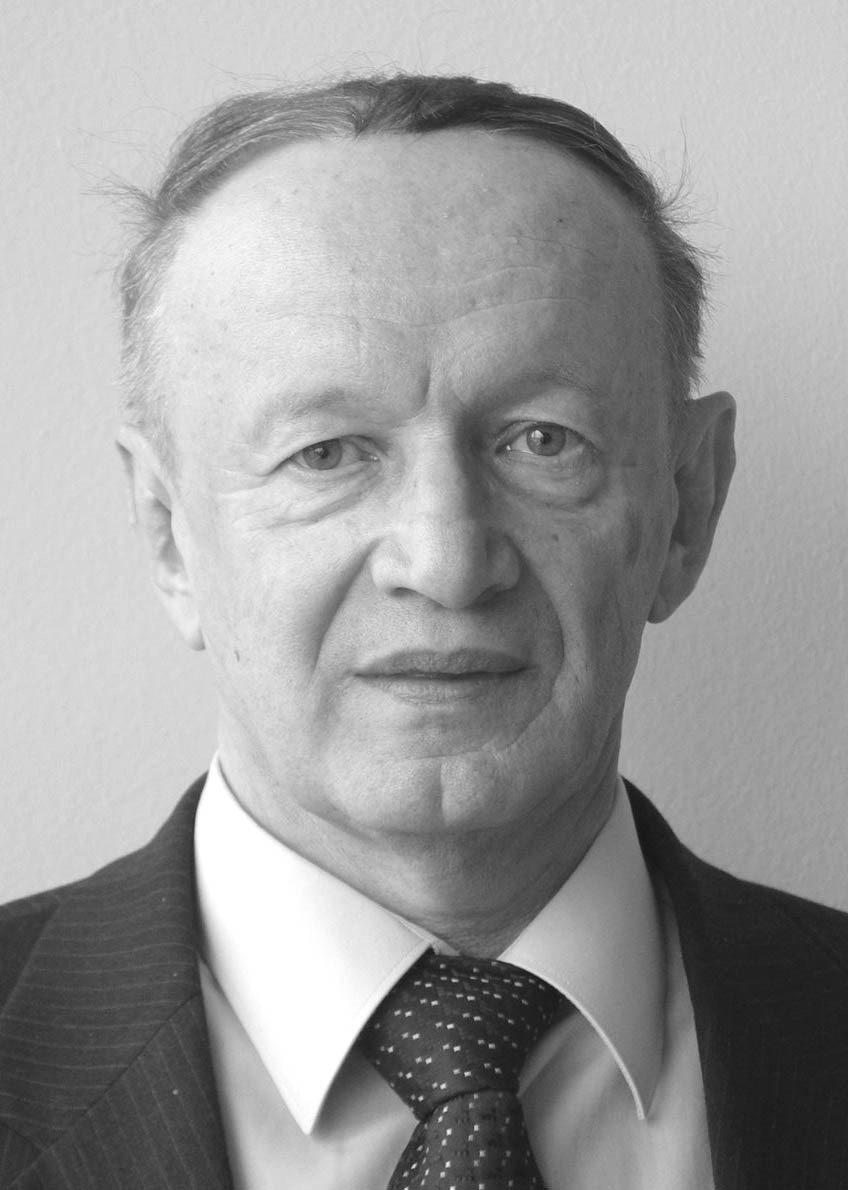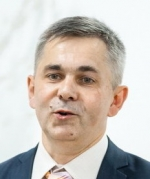MANAGEMENT OF LARGE-SCALE SYSTEM DEVELOPMENT
 |
|
Anatoly D. Tsvirkun, Founder and first Head of Laboratory No. 33 |
The Laboratory was established in 1980 under Prof., Dr. Sci. (Eng.) Anatoly D. Tsvirkun. Since 2019, it has been headed by Dr. Sci. (Eng.) Oleg I. Dranko.
The main research area of the Laboratory is designing large-scale systems and managing their development using mathematical modeling and computer software.
Laboratory’s employees created a new scientific branch—management of large-scale system development—and laid the methodological foundations of the theory of structural analysis and design of large-scale systems. Several high-priority projects on the design and construction of large-scale systems were implemented. In particular, the following results were obtained: an aggregate-decomposition approach was introduced to design complex (large-scale) systems; a methodology was proposed to construct the sets of interrelated models to optimize the planning of development and operation of large-scale socio-economic and technical systems; iterative procedures were developed to plan the development of large-scale systems at the level of their macroeconomic description to study the turnpike properties of such systems.
 |
|
Oleg I. Dranko, Head of Laboratory No. 33 |
Large-scale systems are a class of complex (big) systems with nontrivial (intersectoral, interregional) interactions of elements distributed over a considerable territory, requiring significant resources and time for their development.
Typical examples of large-scale systems are as follows: the fuel and energy complex and its separate sectors; transport, agro-industrial, industrial, regional, and sectoral systems; holdings, concerns, financial and industrial groups, transnational corporations; distributed information transmission and processing systems, and other complexes.
The main features of large-scale systems:
– Significant resources and time are required for developing a large-scale system. (The advance of investment activities can be several years.)
– A large-scale system has a close interconnection with other large-scale systems and the environment.
– Management of large-scale systems is complex. (In particular, it is necessary to coordinate public and private, sectoral, corporate, and regional interests.)
Other characteristics of complex (large-scale) systems:
– The properties and features of large-scale systems cannot be described at a single level of detail. Therefore, such systems are represented as an interconnected set of elements at different levels of detail and development stages of production and transportation objects, etc.
– The development dynamics of different elements are considered using optimization and simulation models and iterative procedures for selecting rational system development alternatives.
– Laboratory’s research was applied to large-scale systems and projects of national economic importance to improve their technical, economic, and performance characteristics.
Important scientific results
Approaches were developed to construct a methodology, models, and methods for managing the development of large-scale systems considering their development dynamics and the operation of their subsystems and elements.
Laboratory’s employees proposed the aggregate-decomposition approach to constructing sets of interrelated optimization models to study planning decision mechanisms in multilevel distributed systems. This approach was adopted to develop methodological foundations for building a set of models and procedures for planning. In particular, the following problems were solved: the optimal placement of orders for production elements with the choice of alternatives to reconstruct and develop their production capacities; rational resource supply planning considering the completion scheme; determination of the optimal degree of localization when creating technologically complex systems; management of global value chains; critical situations for man-machine systems.
The formation of development programs for production-transport large-scale systems was studied, and the corresponding theory, models, and methods were constructed. Stochastic development planning models of large-scale systems were proposed and investigated. These models consider the initial information uncertainty when forming development programs.
Laboratory’s employees studied development program formation methods for large-scale systems considering reliability and risk. These methods are based on the iterative interaction of optimization and simulation models.
Optimization models of economic dynamics were investigated. The obtained results show the scope of applicability of the classical turnpike theory. The theoretical results were confirmed by calculations using the dynamic stationary intersectoral balance model. Also, models of dynamic equilibrium were analyzed.
Currently, the Laboratory develops the methodology, models, and algorithms of strategic planning and management considering the development and operation dynamics of subsystems and elements.
The problem of investment decision-making of companies in a competitive environment with uncertain demand for their products was considered. Mathematical models were constructed to describe the investment behavior of companies in an oligopoly market. The original problem reduces to a dynamic matrix game with the payoff matrix obtained by numerical modeling.
This approach was applied in practice: the competition of oil companies with traditional and non-traditional oil production methods was modeled, and their investment strategies were analyzed and chosen. In particular, the mid-term price dynamics were forecasted based on the real-data calculations of the global oil market.
An inflation management model was constructed to calculate the impact of inflation on the economy and development programs of large-scale regional and production-transport systems. The following results were obtained within this model: an equilibrium was calculated for the goods market with inflation and consumer demand; equilibrium conditions were established for the money market; production capital was estimated. Analytical expressions were derived to regulate the market equilibrium, and calculations were performed for economic regions of the Russian Federation.
The TEO-INVEST software package was developed and successfully implemented in different industry sectors and small- and medium-sized business structures. This package is a professional solution for the financial analysis and business planning of investment projects. TEO-INVEST analyzes and justifies investment projects, particularly assessing the efficiency of production reorganization and modernization, the construction of new industrial enterprises, and technology implementation.
Laboratory’s employees enhance their skills in strategic management, technical and economic studies, and the development of computer systems for assessing investment projects and programs. They prepare investment proposals as well as elaborate and examine business plans for investment projects and programs using international methodologies and computer systems for domestic and foreign customers.
The Laboratory performed calculations and elaborated business plans for investment projects and programs in the following areas: the construction of large urban complexes; the reconstruction and modernization of existing industrial enterprises in oil production and processing, the food industry, the production of mineral fertilizers, machine building, and agricultural processing; the creation of several new industries.
The concepts of development and (or) development programs were elaborated for the Ministry of Railways and the Ministry of Economy of the Russian Federation, JSC Gazprom, JSC Russian Railways, and other organizations and agencies.
The scientific foundations of the structural design of complex systems and management of their development were published in several monographs: Osnovy sinteza struktury slozhnykh sistem (Foundations of the Structural Design of Complex Systems), Nauka, 1982; Modelirovanie razvitiya krupnomasshtabnykh sistem (Modeling of Large-Scale System Development), Ekonomika, 1983; Imitatsionnoe modelirovanie v zadachakh sinteza struktury slozhnykh sistem (Simulation Modeling in the Structural Design of Complex Systems), Nauka, 1985; Struktura mnogourovnevykh i krupnomasshtabnykh sistem. Sintez i planirovanie razvitiya (The Structure of Multi-level and Large-Scale Systems. Design and Development Planning), Nauka, 1993; Analiz investitsii. Metody i instrumental’nye sredstva (Investment Analysis. Methods and Tools), Os’-89, 2002; Upravlenie razvitiem krupnomasshtabnykh sistem (Management of Large-Scale System Development), Fizmatlit, 2012.
In recent years, new scientific results were obtained, including multilevel optimization schemes and decision coordination procedures for the aggregated and detailed management models of large-scale system development. Also, some applied issues were considered: investment programs for developing production systems were optimized using Laboratory’s software tools. A simulation-optimization approach was proposed to select and optimize investment programs for developing production systems. Within this approach, a set of interrelated simulation, optimization, and computational models is constructed.
The Laboratory organizes the International Conference on Management of Large-Scale System Development (MLSD). This event continues the tradition of regular conferences, seminars, and schools held by the Institute in different cities: Zvenigorod (1979, 1985, and 1990), Saratov (1980, 1986, and 1989), Tashkent (1981 and 1987), Kyiv (1985), Riga (1986), Kharkiv (1986), Batumi (1988), Kherson (1989), and others. The first seminar was held in 1979, and Acad. V.A. Trapeznikov was Chairman of the Program Committee. The last conference was held in 1990, and I.V. Prangishvili was Chairman of the Program Committee.
Since 2007, MLSD is annually organized at the Institute; Acad. S.N. Vassilyev is Chairman of the Program Committee.
After a significant break, management of large-scale system development becomes topical again, and MLSD unites the interested researchers working in the area.
Laboratory’s employees have published over 1000 works, including 23 monographs.
